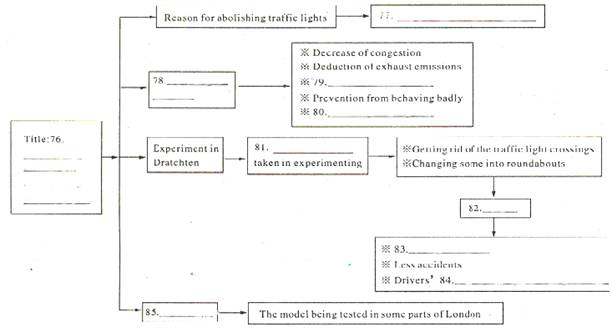题目内容
There are many different ways of seeing a town for the first time. One of them is to walk around it, guide-book 1 hand. Of course, we may 2 with our guide-books the history and 3 developments of a town and get to know them. 4 then, if we take out time and 5 in a town for a while, we may get to know it better. When we 6 it as a whole, we begin to have some 7 ,which even the best guide-books do not answer. Why is the town just 8 this, this shape, this plan, this size? Why do its streets 9 in this particular way, and not in any 10 why?
Here even the best guide-book 11 us. One can’t find in it the information about how a town has developed to the 12 appearance. It may not describe the original (最初的) 13 of a town. However, one may get some idea of what I 14 look like by walking around the town. One can also imagine 15 the town was first planned and. Then one can learn more about in what direction the town 16 to develop.
What is the 17 of studying towns in the way? For me, it is 18 that one gets a greater depth of pleasure by visiting and seeing a town with one’s own eyes. A 19 visit to a town may help one better understand why it is attractive 20 just reading about it in a guide-book.
1. A. in B. C. by D. on
2. A. write B. study C. tell D. remember
3. A. strange B. similar C. separate D. special
4. A. But B. Before C. Since D. Until
5. A. look at B. work C. stay D. wail
6. A. look at B. look after C. look for D. look up
7. A. ideas B. opinions C. feelings D. questions
8. A. of B. for C. like D. at
9. A. open B. an C. begin D. move
10. A. one B. more C. other D. such
11. A. helps B. tricks C. fails D. satisfies
12. A. old B. mortal C. first D. present
13. A. capital B. meaning C. design D. change
14. A. used to B. seemed to C. had to D. happened to
15. A. what B. how C. when D. where
16. A. stops B. appears C. starts D. continues
17. A. point B. view C. problem D. difficulty
18. A. needy B. simply C. generally D. bacilli
19. A. eatery B. formal C. group D. personal
20. A. from B. than C. through D. with
1—5 AB DAC 6—10 ADCBC 11—15 CDCAB 16—20 DABDB

